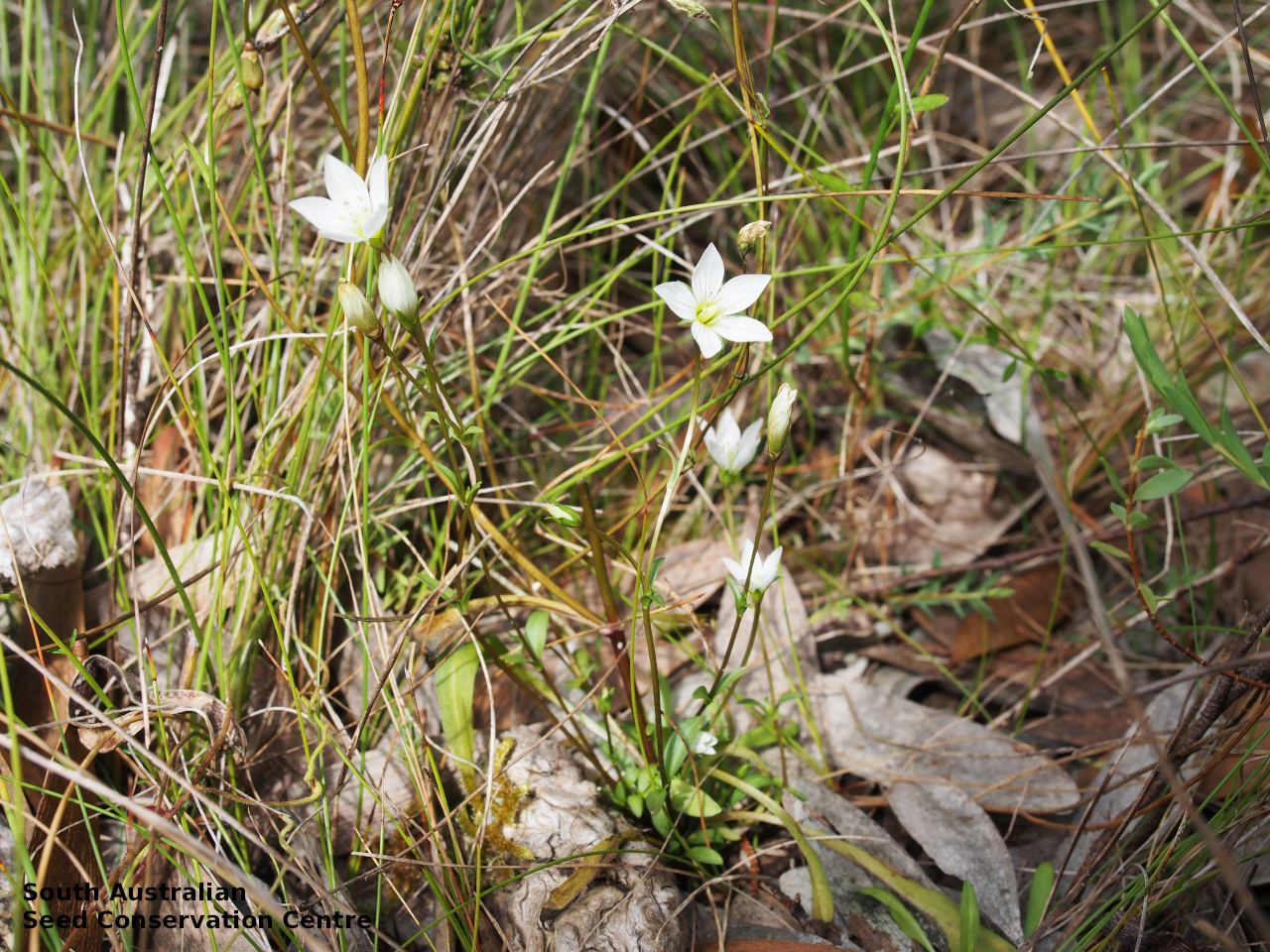
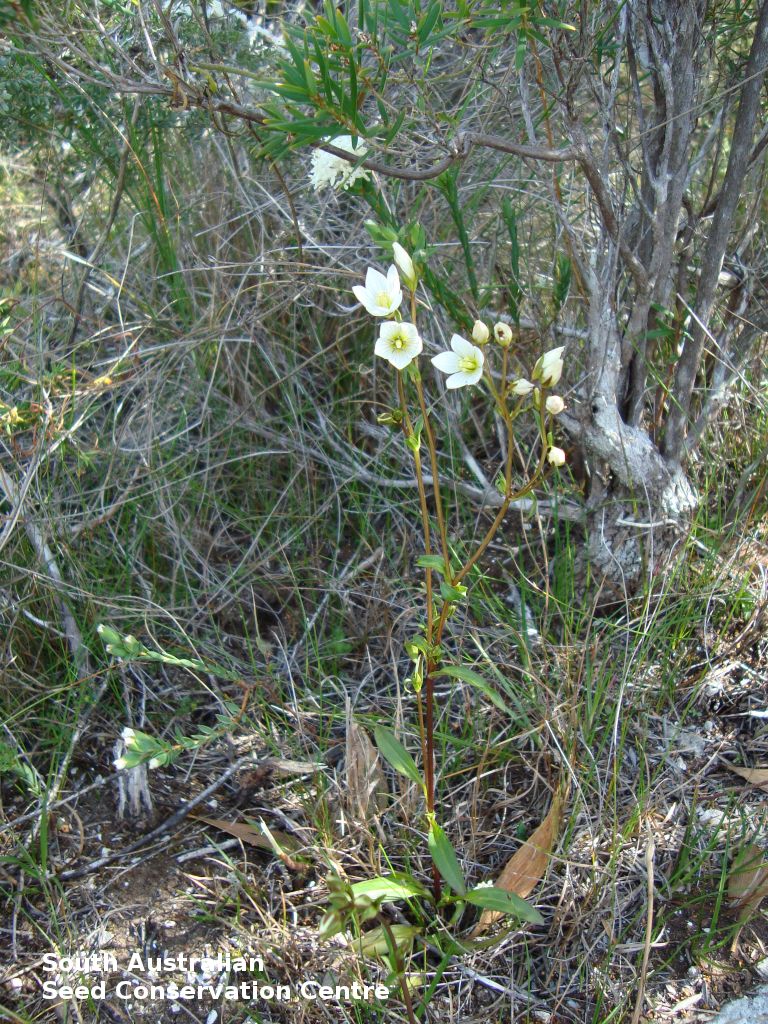
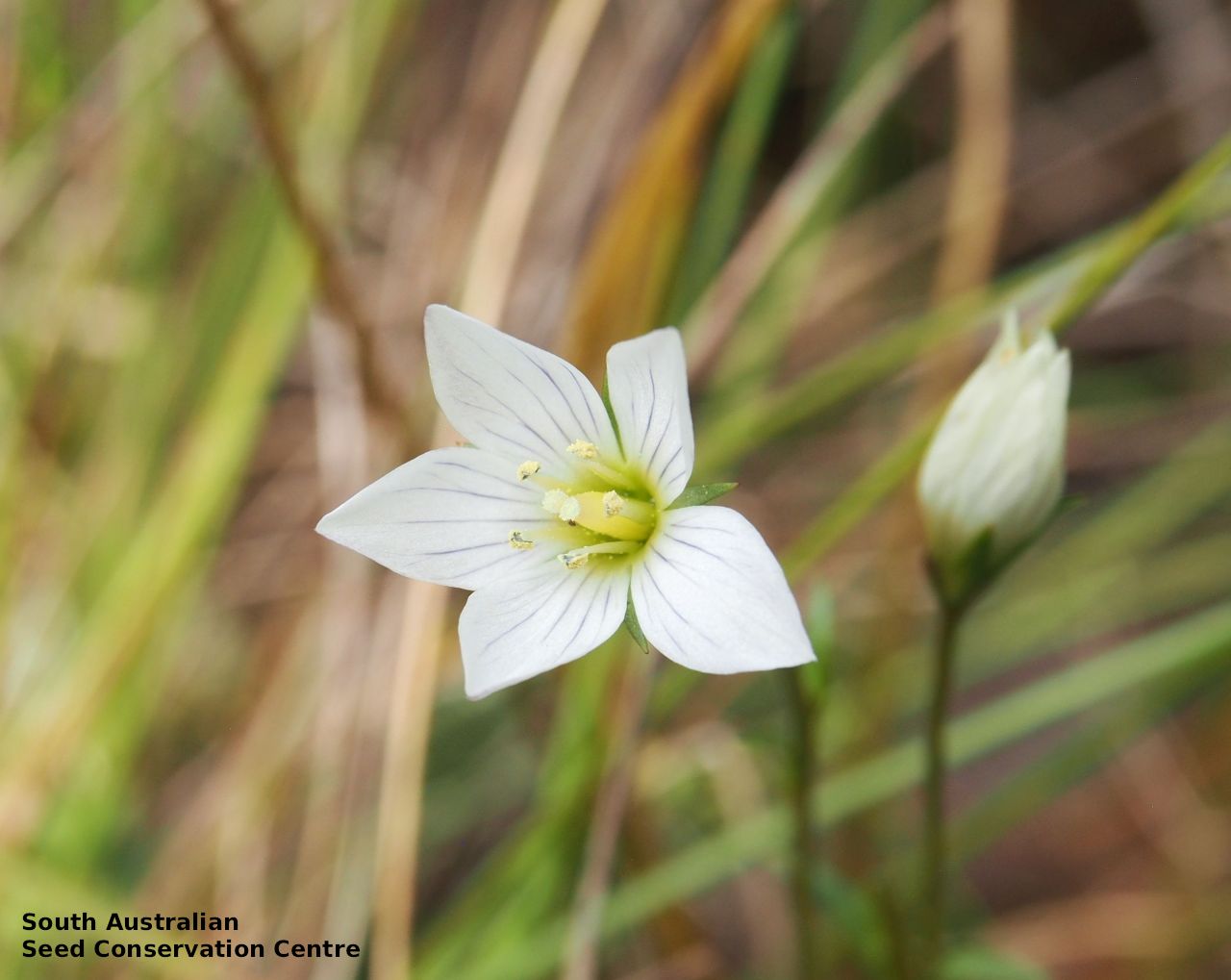
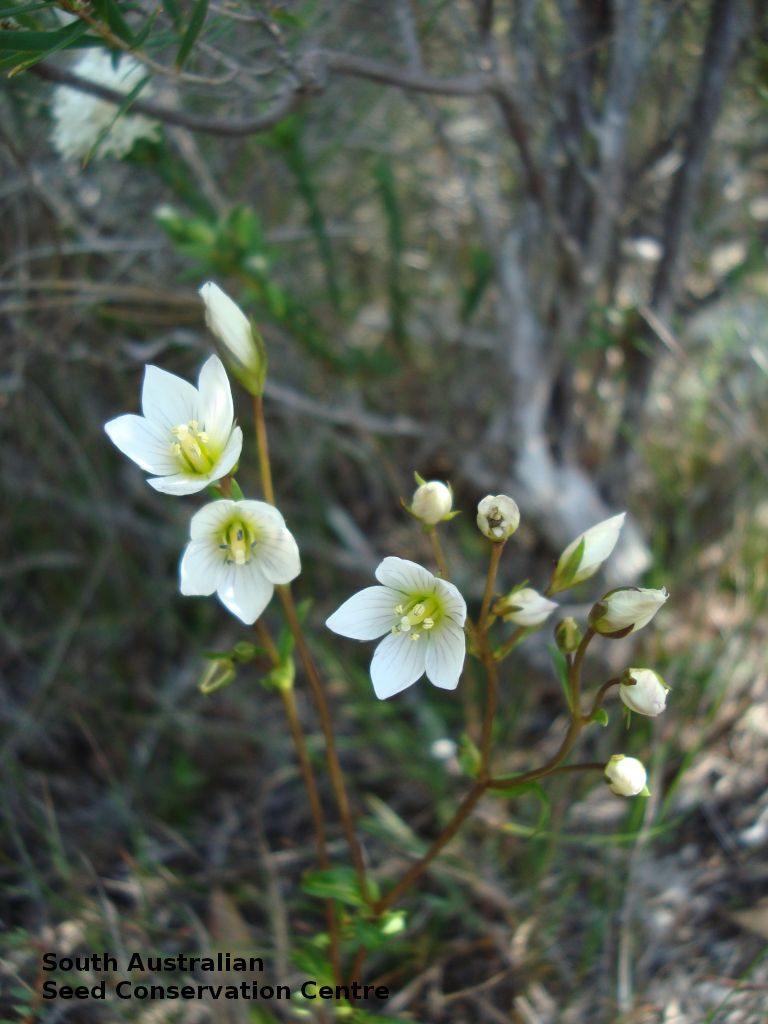
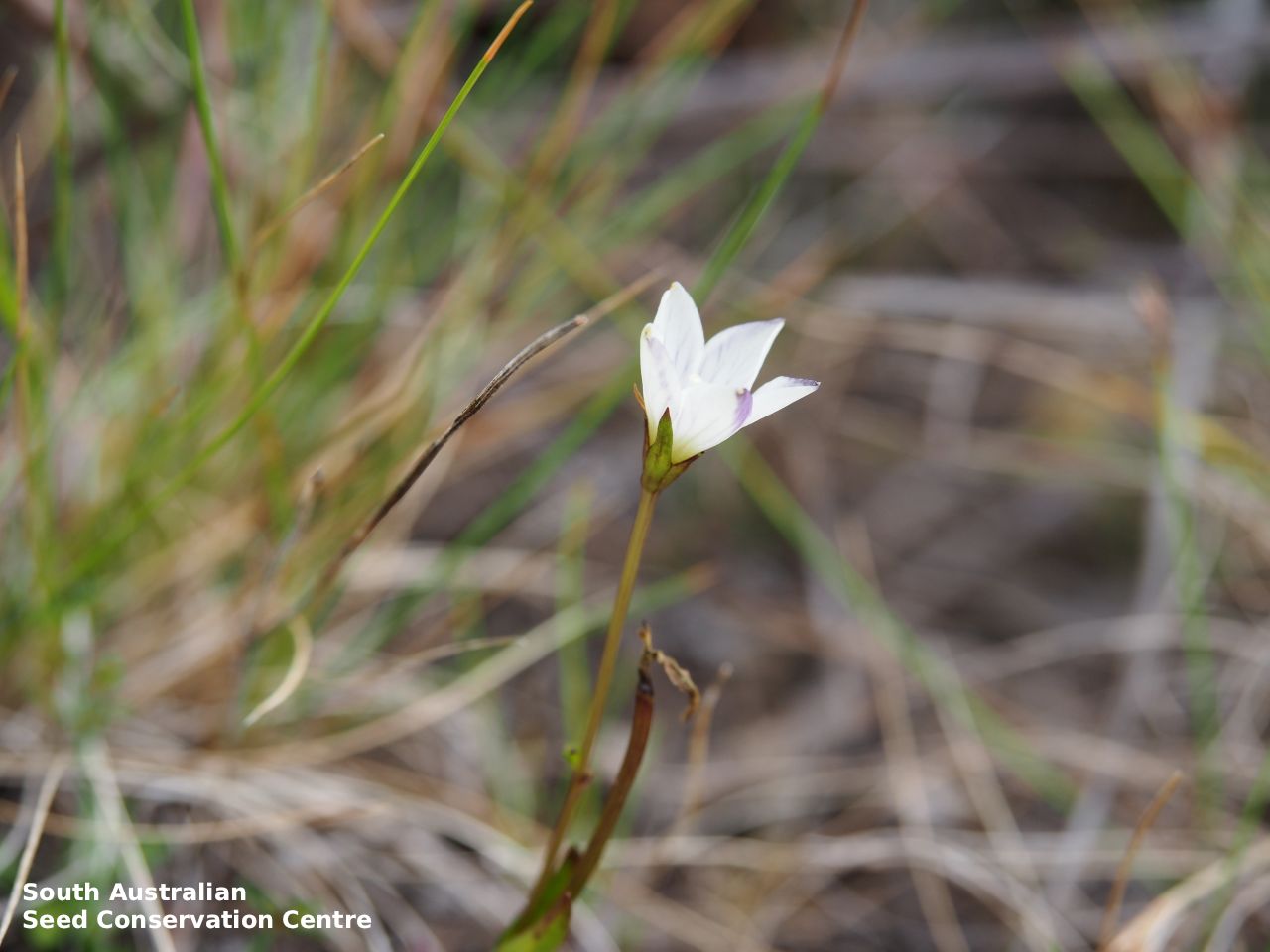

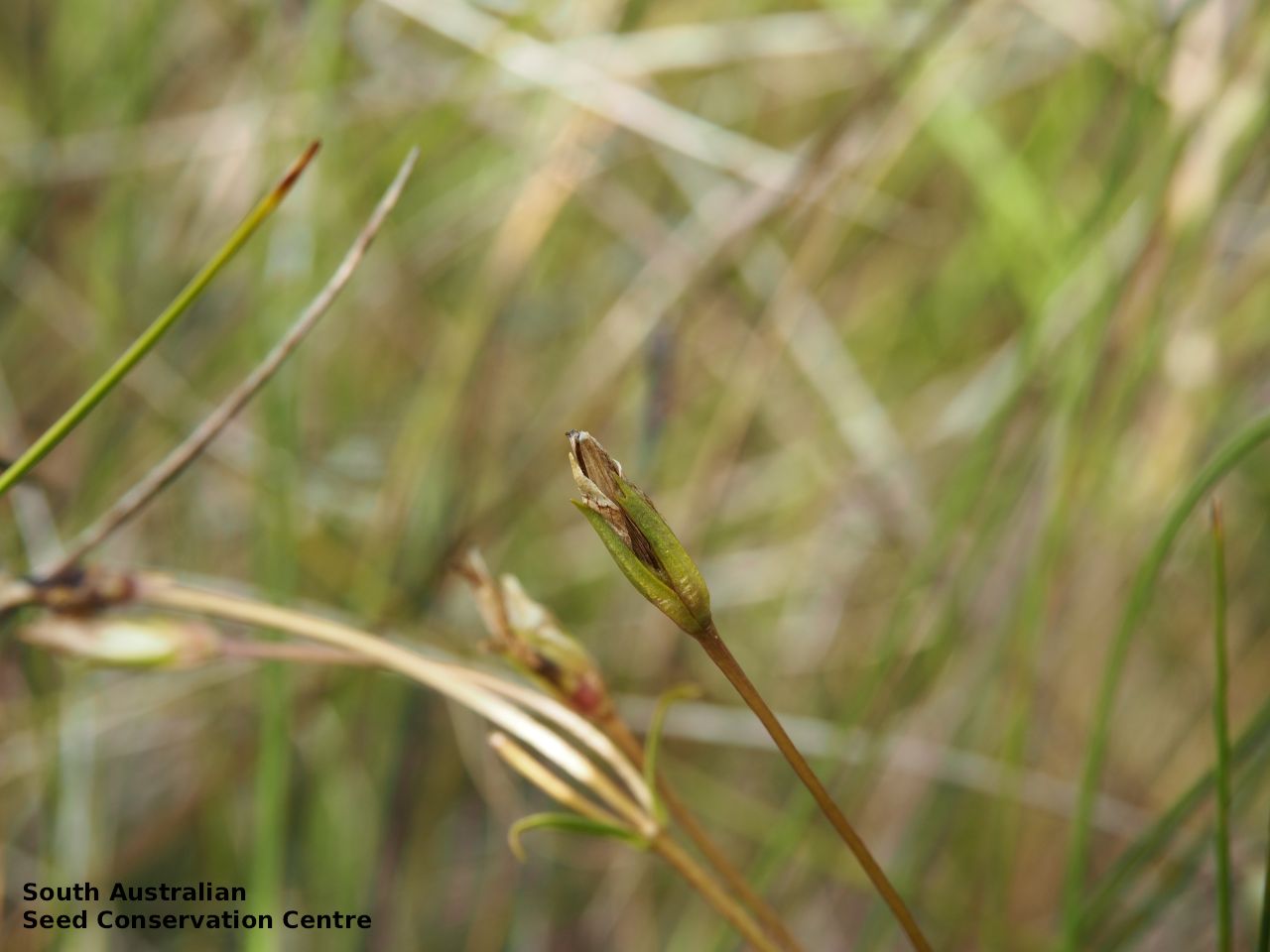
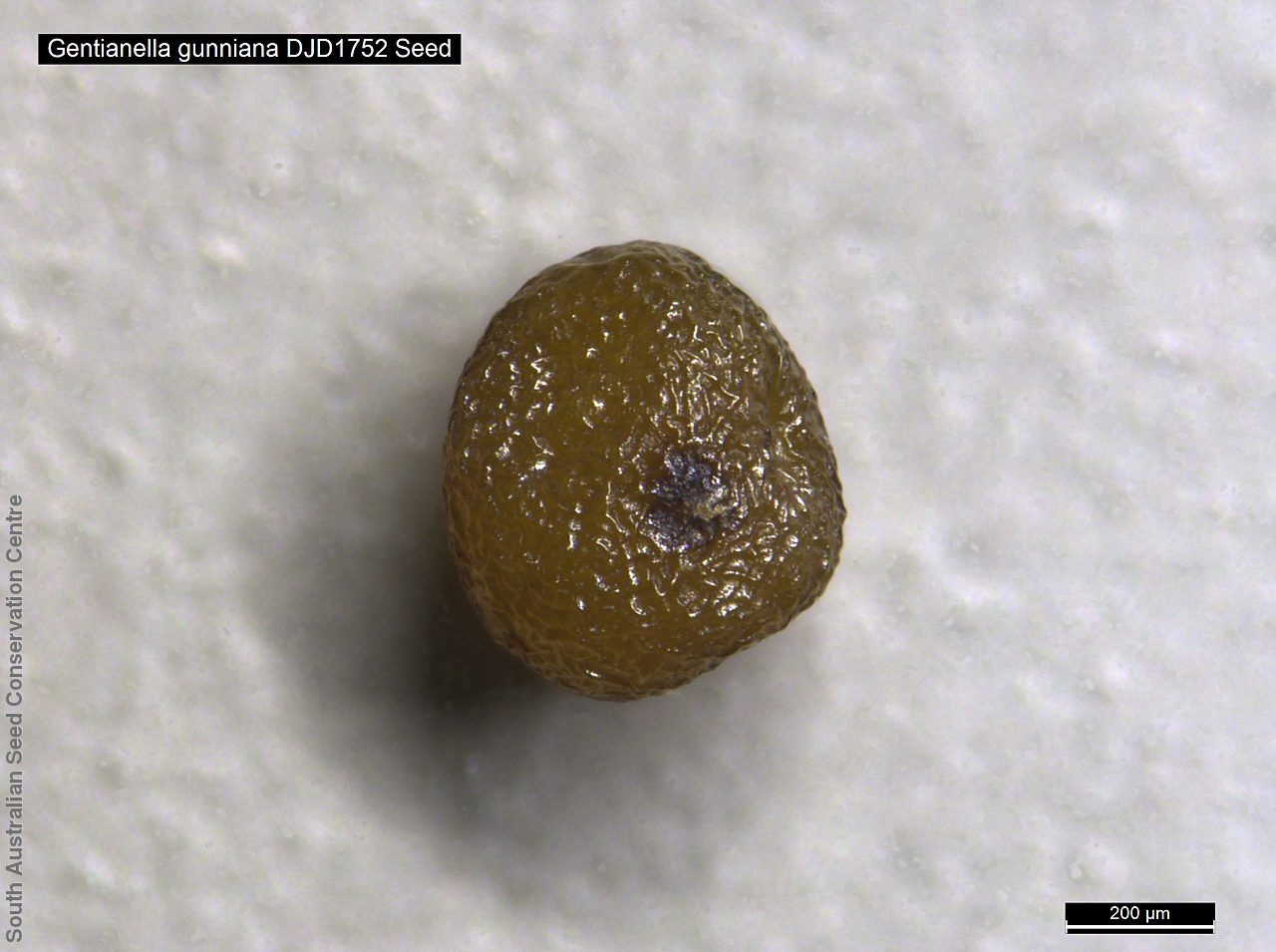
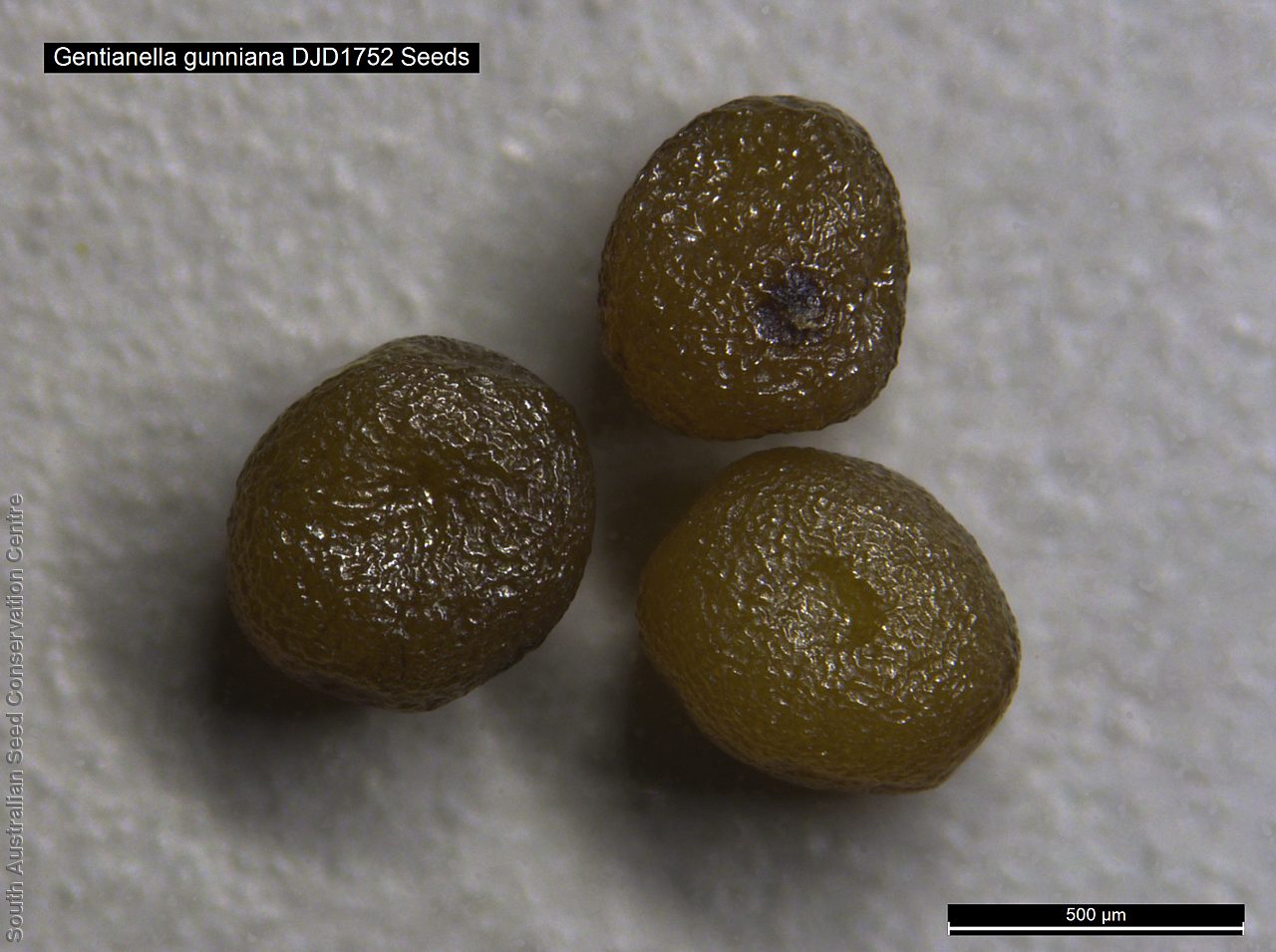
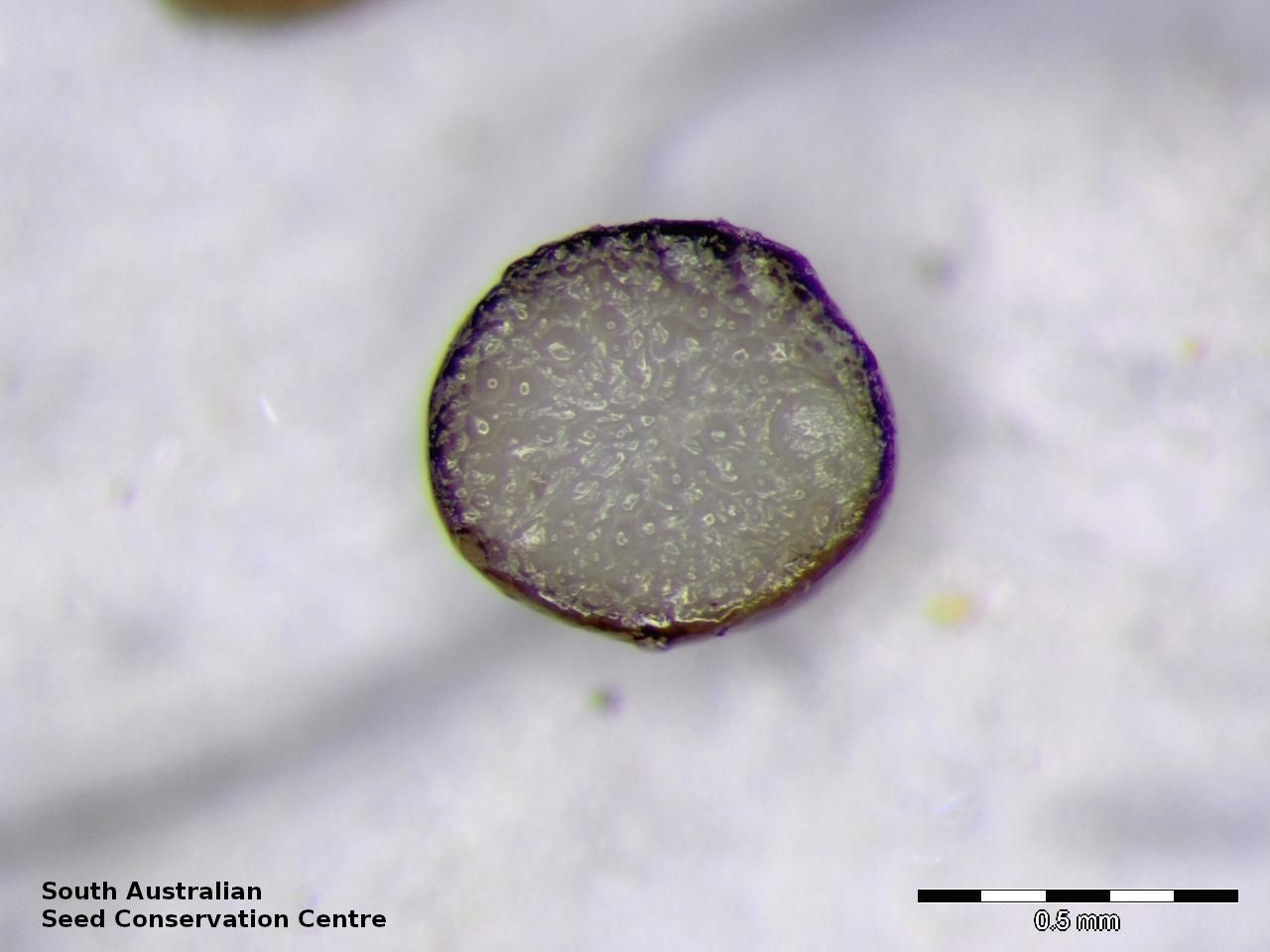
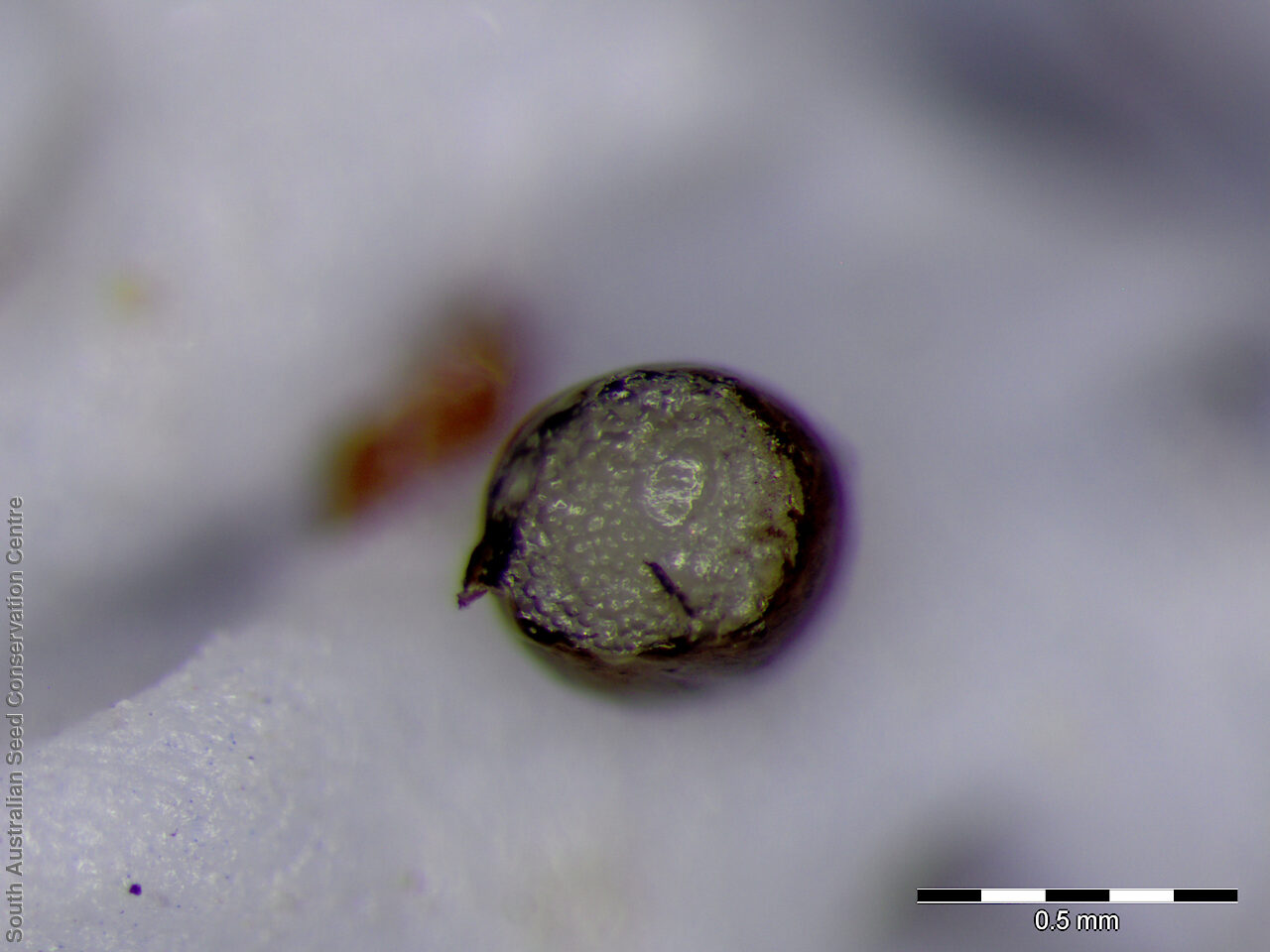
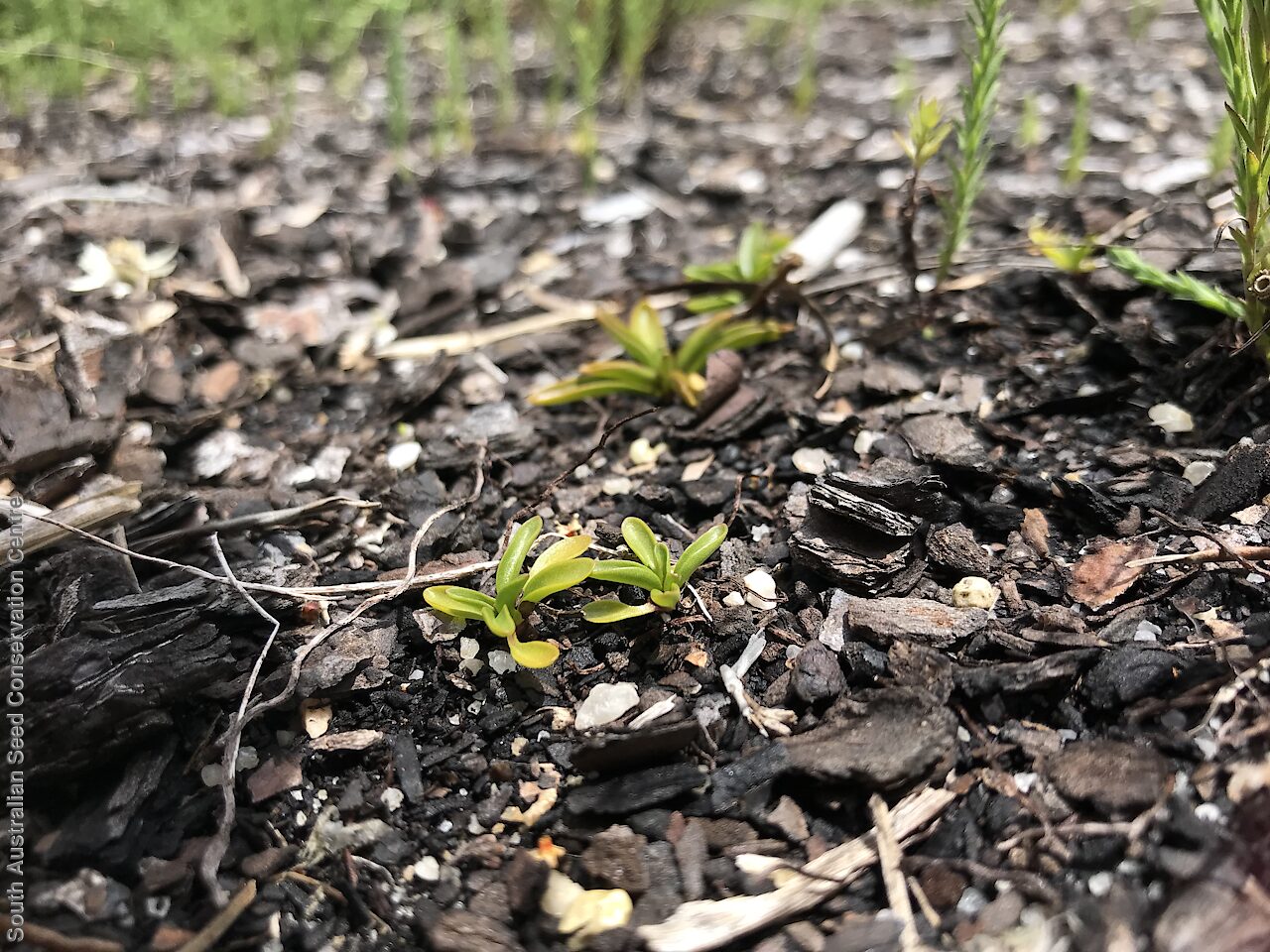


Botanical art
Prior names
Gentiana saxosa
Gentiana pleurogynoides
Gentiana diemensis
Gentianella diemensis
Chionogentias gunniana
Common names
Mountain gentian
Gentian
Etymology
Gentianella from the genus Gentiana, named after King Gentius, 6th century king of Illyria, who ordered the roots of the yellow gentian for medicinal use against the plague, and the diminutive suffix 'ella' meaning smaller. Gunniana named after Ronald Campbell Gunn (1808-1881), a British botanist and legislator in Launceston, Tasmania.
Distribution and status
Currently known only from one location in South Australia, in the lower South-East growing on limestone in open areas in low heath. Also found in Victoria and Tasmania. Native. Very rare in South Australia. Presumed extinct in Victoria. Uncommon in Tasmania.
Herbarium region: South Eastern
NRM region: South East
AVH map: SA distribution map (external link)
Plant description
Erect annual herb to 30 cm tall with a basal rosette of lance-shaped leaves and paired linear leaves along the copper-coloured stems. Flowers are white with purple veins on the inside, appearing in spring. Fruits are brown capsules. Seeds are small brown round seed to 0.8 mm diameter with a round depression on one side. Seed embryo type is spathulate under-developed.
Seed collection and propagation
Collect seeds between November and December. Collect mature capsules as they dry off and turn brown. They should contain hard brown seeds inside. Place the capsules in a tray for a week. Ensure you cover the tray with paper to prevent the seeds popping out. Then rub the capsules with your fingers to dislodge all the seeds. Use a sieve to separate the unwanted material. Store the seeds with a desiccant such as dried silica beads or dry rice, in an air tight container in a cool and dry place. From one collection, the seed viability was high, at 95%.
| Location | No. of seeds (weight grams) | Number of plants | Date collected | Collection number Collection location | Date stored | % Viability | Storage temperature |
|---|---|---|---|---|---|---|---|
| BGA | 2,800 (0.27 g) | 20 | 10-Nov-2009 | DJD1752 South Eastern | 1-Jun-2010 | 95% | +5°C, -18°C |
| BGA | 8,300 (0.79 g) | 60+ | 18-Nov-2008 | DJD1335 South Eastern | 1-Jan-2012 | 100% | +5°C, -18°C |
| BGA | 1,700 (0.15 g) | 20+ | 28-Nov-2011 | DJD1335 South Eastern | 1-Jan-2016 | 100% | -18°C |
| BGA | 2,200 (0.31 g) | 30+ | 24-Nov-2018 | DJD3689 South Eastern | 24-Apr-2019 | 100% | -18°C |
| BGA | 10,300 (1.25 g) | 30 | 24-Jul-2019 | DJD3689 South Eastern | 24-Jun-2020 | 100% | -18°C, -80°C |
| BGA | 7,600 (0.85 g) | 100 | 15-Nov-2017 | DJD3689 South Eastern | 24-Jun-2020 | 100% | -18°C, -80°C |
| BGA | 72,800 (9.990 g) | 6 | 28-Oct-2020 | TST1450 South Eastern | 28-Jun-2021 | 100% | -18°C, -80°C |
| BGA | 4,300 (0.352 g) | 30+ | 16-Sep-2021 | TST1450 South Eastern | 7-Jul-2022 | 100% | -18°C |
Number of plants: This is the number of plants from which the seeds were collected.
Collection location: The Herbarium of South Australia's region name.
% Viability: Percentage of filled healthy seeds determined by a cut test or x-ray.